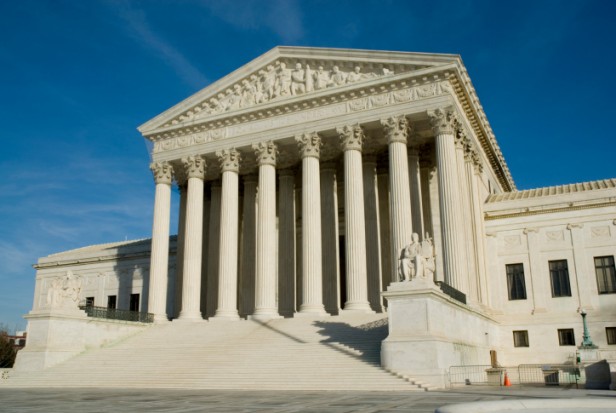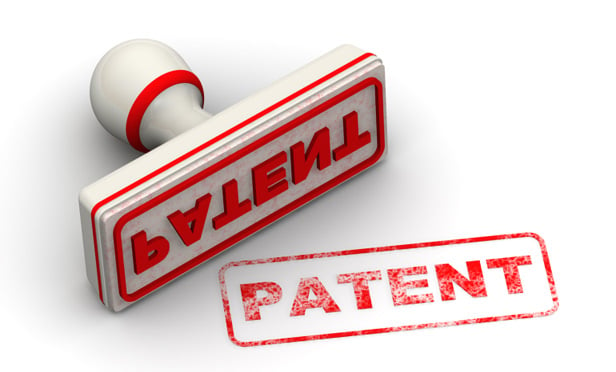Features

<b><i>Online Extra</b></i><br>Apple Loses to Samsung in Supreme Court Design Patent Case
The U.S. Supreme Court unanimously ruled in favor of Samsung Electronics on Dec. 6 in its titanic patent dispute with Apple Inc. over design features copied from Apple iPhones.
Features

Expanded Means-Plus-Function Analysis Presents New Opportunities and Challenges
The Federal Circuit's <i>en banc</i> decision in <i>Williamson v. Citrix Online</i> expanded the potential application of 35 U.S.C. §112, ¶6, making it more likely that functional claim language will be construed as a means-plus-function limitation even in the absence of the word "means." This article discusses recent decisions applying <i>Williamson</i> and provides practical insights and strategies for patent owners and accused infringers to consider when addressing the expanded application of §112, ¶6.
Features

Salvaging a Patent After a Post-Grant Proceeding
When the Patent Trial and Appeal Board (PTAB) decides to institute a post-grant proceeding, the subject patent is in jeopardy.
Features

Software and Business Method Inventions After <i>Alice</i>
As important as software and business method inventions are in the new digital economy, it is often unclear whether they can be patented. This uncertainty is largely due to a legal rule that “abstract ideas” are not eligible for patent protection, which is based on a long line of U.S. Supreme Court cases, with <i>Alice Corporation v. CLS Bank</i> being the most recent and influential.
Features

Increase of IP Cyberthefts on the Horizon, and Many Unprepared
Though cybertheft of intellectual property is predicted to dramatically increase over the next 12 months, a significant portion of companies has yet to fully secure their IP assets, according to a survey released by Deloitte Cyber Risk Services.
Columns & Departments

IP News
Fed. Cir.: Patent Application Provided Sufficient Written Description to Provide Priority Date<br>Fed Cir: Patent Trial Appeals Board's Decision on Assignor Estoppel is Not Reviewable<br>Fed. Cir.: Automatic Method for Lip Synchronization and Facial Expressions of Animated Characters is Patentable Subject Matter
Features

Supreme Court Term Promises to Be IP Blockbuster
With four IP cases on the docket and several more knocking at the door of certiorari, the U.S. Supreme Court is poised for a banner year of patent, trademark and copyright decisions.
Features

IP News
Federal Circuit: Actual Controversy Existed When Patent Owner Did Not Know Existence of Specific Products<br>Federal Circuit Upholds Prosecution Estoppel Determination<br>

To Sue or Not to Sue for Trademark Infringement
A strong trademark can be a company's most significant asset. Infringement, however, can strip the trademark of its value by causing "confusion among consumers" as to the identity and origin of the client's product.
Features

Patents: When the 'Plain and Ordinary' Meaning Is Neither Plain Nor Ordinary
It is common in patent cases for the patentee to ascribe "plain and ordinary" meaning to terms in a patent claim, while the defendant often seeks a narrower construction. But what if the parties agree that "plain and ordinary" applies but then dispute what the plain and ordinary meaning should be?
Need Help?
- Prefer an IP authenticated environment? Request a transition or call 800-756-8993.
- Need other assistance? email Customer Service or call 1-877-256-2472.
MOST POPULAR STORIES
- Yachts, Jets, Horses & Hooch: Specialized Commercial Leasing ModelsDefining commercial real estate asset class is essentially a property explaining how it identifies — not necessarily what its original intention was or what others think it ought to be. This article discusses, from a general issue-spot and contextual analysis perspective, how lawyers ought to think about specialized leasing formats and the regulatory backdrops that may inform what the documentation needs to contain for compliance purposes.Read More ›
- Hyperlinked Documents: The Latest e-Discovery ChallengeAs courts and discovery experts debate whether hyperlinked content should be treated the same as traditional attachments, legal practitioners are grappling with the technical and legal complexities of collecting, analyzing and reviewing these documents in real-world cases.Read More ›
- Identifying Your Practice's DifferentiatorHow to Convey Your Merits In a Way That Earns Trust, Clients and Distinctions Just as no two individuals have the exact same face, no two lawyers practice in their respective fields or serve clients in the exact same way. Think of this as a "Unique Value Proposition." Internal consideration about what you uniquely bring to your clients, colleagues, firm and industry can provide untold benefits for your law practice.Read More ›
- Risks and Ad Fraud Protection In Digital AdvertisingThe ever-evolving digital marketing landscape, coupled with the industry-wide adoption of programmatic advertising, poses a significant threat to the effectiveness and integrity of digital advertising campaigns. This article explores various risks to digital advertising from pixel stuffing and ad stacking to domain spoofing and bots. It will also explore what should be done to ensure ad fraud protection and improve effectiveness.Read More ›
- Turning Business Development Plans Into RealityThis article offers practical insights and best practices to navigate the path from roadmap to rainmaking, ensuring your business development efforts are not just sporadic bursts of activity, but an integrated part of your daily success.Read More ›
